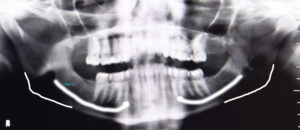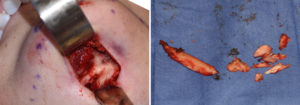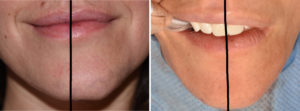Background: Lower facial asymmetry is most commonly associated with the shape of the jawline. While patients often present with chin asymmetry, closer inspection often reveals that it extends back along the jawline as well. With the chin asymmetry the jawline on the longer chin side is lower and conversely it is higher on the shorter chin side. A debate can be had about which is the normal side and whether the condition is hypoplasia or hyperplasia which has great relevance when it comes to treatment planning.
True lower facial bony asymmetry has soft tissue asymmetries as well which would be consistent with that of a developmental origin. The lips will be tilted with different horizontal positions of the mouth corners. The base of the nostrils will be tilted and even the eyes may have subtle differences in the horizontal lines between the inner and outer canthi. Most of these soft tissue asymmetries are far less correctable than that of the underlying bone
Correction of chin and jawline asymmetry must take into consideration numerous anatomic factors. In the chin area the short length of the tooth roots do not pose any restrictions for the amount of bone that can be removed. But in the jawline behind the chin the location of the inferior nerve as it courses through the bone is, however, a potential surgical restriction. When vertical bone reduction is indicated (facial hyperplasia) preoperative x-rays are needed to determine the limits of these bony changes.



The aesthetic management of the chin and jawline asymmetry from hyperplasia that does not include occlusal adjustments is based on removing bone along the inferior and/or inferolateral border. The submental approach offers a direct line of sight method doing so with the greatest accuracy and safety to the inferior alveolar nerve. The fine line scar under the chin is a reasonable aesthetic tradeoff for these more predictable any changes. Radiographic surgical planning is essential and, while 3D CT scans have the most visual appeal, a traditional panorex x-ray offers a vert measurable method to determine a safe amount of vertical bony reduction along the inferior borders.
Highlights:
- 1) Chin asymmetry is often associated with jaw asymmetry as well.
- 2) The submittal approach offers the most effective reshaping of the chin and jawline due to line of sight visual access.
- 3) The location of the metal nerve and tooth roots can limited the extent of bony symmetry that is possible to achieve.
Dr. Barry Eppley
Indianapolis, Indiana


